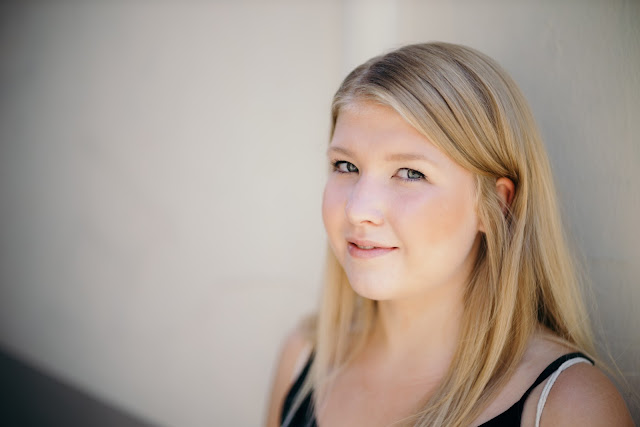Canon Lens FD 50mm 1:1.2L - Tiny Superspeed
 |
| Canon Lens FD 50 mm 1:1.2 L Vintage Manual Focus Lens |
Introduction:
I lusted for the Canon Lens FD 50mm 1:1.2L, for so long. After I acquired my first Canon FD lenses (Canon FD 35/2 SSC) I searched the web for the complete FD system and I stumbled upon Canon FD L lenses. I didn’t even knew there where these famous red ring L lenses prior to EOS mount. I’ve been a Canon shooter before I switched to Sony’s A7R (actually had a short romance with Fuji first), so I knew that those had to be the most promising performers of the entire FD system.
 |
| Three Canon FD L Primes 24 / 50 / 85 mm and a Canon F-1 New with a 135 mm 1:2.0 Lens. |
 |
| This Image shows my nFD 50mm 1.2 lens, which I've already sold. |
I searched for about a year, to find one for a reasonable price and gladly I did. As always, patience pays off and I got a very nice deal for an almost mint copy including original caps and even the hood in mint working condition (often those FD hoods don’t stay in place nowadays).
History:
Before I get started with my findings about this lens, let’s talk about the history behind it. Because from a lens construction standpoint the Canon is fairly unique. Ken Rockwell said this in his introduction about that lens: „This Canon 50mm f/1.2 L Aspherical Floating-Element lens is the most optically advanced 50mm manual-focus lens ever sold anywhere. It's got more technology in it than anything from Nikon or LEICA, who have never put aspherics and floating elements in any of their 50mm f/1.2 lenses.“ Thanks Ken for that nice intro.
This was not Canons first highly regarded 50ish 1.2 lens. It’s predecessor the Canon Lens FD 55mm 1:1.2 ASPHERICAL is a legend itself. Maybe because the famous and well regarded Leica specialist Erwin Puts has claimed that the Canon 50mm f/1.2 L Aspherical is optically superior to Leicas first 1.2 Noctilux, especially in the corners.
There are several versions of that 55 1.2 Asperical and the even (much) rarer Canon 55mm 1.2 AL which also came in different version. If you’re able to understand german language you can also read in Olypedia a detailed article about Canons 55 Aspherical and AL lenses. They claim that the 55 1.2 AL was planned to be an FL (the predecessor mount of FD) lens and maybe there are some prototypes in the possession of some lucky guys out there. The FL mount also hab a 55mm 1.2 and a 58mm 1.2 lens. Which can be had quite cheap, if you can find one.
The Canon Lens FD 50mm 1:1.2L was released in october 1980 and was the most expensive 50mm lens in the FD lineup. I found an old price list from 1986 and for reference the 50/1.2 L was 857,00 USD, the non L version was 320,00 USD and the popular 50/1.4 was only 170,00 USD. In this list the 50 L is even more expensive than the 85 L and 35 tilt shift.
Sample Images
 |
| Bokeh mid distance Canon 50mm 1.2 L |
 |
| Bokeh wide open - minimum focus distance |
 |
| Shooting when there is close to no light at all. Canon FD 50 1.2 L wide open on Sony A7r at ISO3200 |
 |
| Another one at ISO3200 and pushed 1.85 Stops, hence the noise. Face is lit by a small candle. |
A fast 50 is also well suited for portraiture work and I also like to use it that way. It is really sharp if you nail the focus, which can be challenging especially wide open. Background seperation is excellent as you would expect. Vignetting is quite strong wide open, stopped down it is no problem.
You shouldn't point this lens in direct sunlight, it can produce heavy lens flares. This shot shows the worst case scenario. If you use this effect to your advantage it can yield to interesting results.
Conclusion:
The Canon FD 50 1.2L is a really versatile lens. It can serve you as a sharp and compact 50 mm lens. It works great for street photography and documentary stuff. The image quality stopped down is perfectly usable on my Sony A7r. How does it compare to the Zeiss Loxia 50 mm? It is far worse in almost every measurable category compared to the Zeiss. In personality and creative freedom on the other hand, the Canon wins.
A super wide aperture and crazy flares can be a great combo for shooting just for fun. There is just so much you can do with this lens. You can also take great shots like this one at f8 on a Canon T90 film camera.
The point of this lens is, that you don't have to trade the 1.2 aperture for compactness. It is among the best performing 50 mm vintage primes and adds that nice and useable 1.2 aperture as a bonus. For a 50 mm vintage prime there is only one real downside, which is price.
Specification:
Average price: 500 – 700 €
Focal length (35 mm): 50 mm
Brennweite (1,5 Crop): 75 mm
Aperture Max: 1,2
Aperture Min: 16
Filter size: 52
Aperture blades: 8
Groups: 6
Elements: 8
Minimum focus distance: 0,5 meter
Magnification : 0,13 x
Length x Diameter: 50,5 x 65,3 mm
Weight: 380 g
Lens Hood: BS-52
Frontdeckel: C-52
Release date: October 1980
http://www.mir.com.my/rb/photography/companies/canon/fdresources/fdlenses/50mm.htm
http://olypedia.de/Canon_FD_1:1,2/55_mm_S.S.C._Aspherical
http://kenrockwell.com/canon/fd/50mm-f12-L.htm





HD camera price in Pakistan starts from around 91,669 PKR for a DSLR camera.
AntwortenLöschen